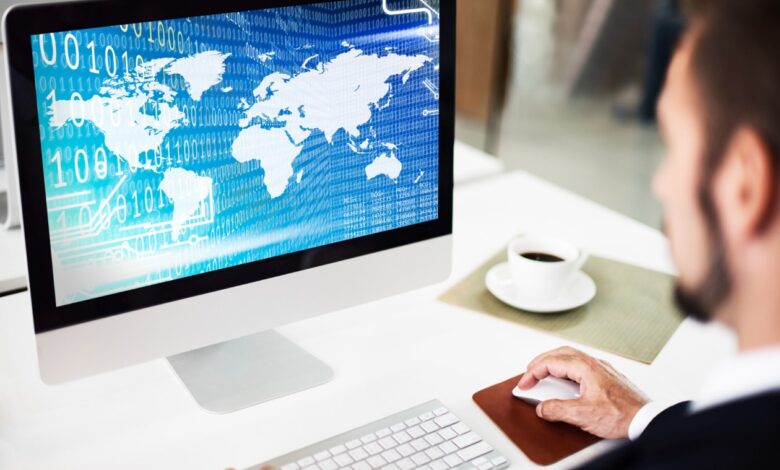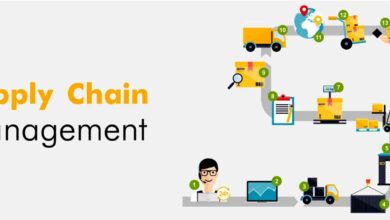How To Trace An IP Address: A Comprehensive Guide

In today’s interconnected world, the need to trace an IP address may arise for various reasons, from troubleshooting network issues to enhancing cybersecurity. Understanding the process of tracing an IP address can be a valuable skill for both individuals and businesses. In this comprehensive guide, we will walk you through the intricacies of tracing an IP address, step by step.
Before we delve into the nitty-gritty of IP address tracing, let’s start with the basics. An IP (Internet Protocol) address is a unique numerical label assigned to each device connected to a computer network. It serves as an identifier, enabling data packets to be sent to the correct destination.
What is an IP Address?
An IP (Internet Protocol) address is a unique numerical label assigned to each device connected to a computer network, such as the internet. It serves as an identifier that enables data packets to be sent to the correct destination within the network. IP addresses play a fundamental role in how devices communicate with each other over the internet or local networks.
There are two main types of IP addresses:
- IPv4 (Internet Protocol version 4): IPv4 addresses consist of four sets of numbers separated by dots, such as “192.168.1.1.” Each set can range from 0 to 255, providing a finite number of unique combinations. Due to the growing number of connected devices, IPv4 addresses have become somewhat limited.
- IPv6 (Internet Protocol version 6): IPv6 addresses were introduced to address the scarcity of IPv4 addresses. They use a more complex hexadecimal format, featuring eight groups of four hexadecimal digits, separated by colons, such as “2001:0db8:85a3:0000:0000:8a2e:0370:7334.” IPv6 offers a vastly larger pool of unique addresses, accommodating the expanding internet ecosystem.
In essence, IP addresses allow devices to find and communicate with one another on the internet, making them a fundamental component of modern networking and online connectivity.
Read More: 9 Tips To Save Money for Trip to Italy
Why Trace an IP Address?
Trace an IP address serves several essential purposes, making it a valuable tool in various situations. Here are some reasons why you might need to trace an IP address:
- Network Troubleshooting: When network issues arise, tracing IP addresses can help identify the source of problems such as slow connections, packet loss, or dropped connections. By tracing the route data packets take, you can pinpoint where issues occur.
- Cybersecurity Investigations: In the realm of cybersecurity, tracing IP addresses is a crucial part of tracking down cybercriminals and identifying potential threats. It can help determine the origin of malicious activities, such as hacking attempts or cyberattacks.
- Locating Lost or Stolen Devices: If a device, such as a laptop or smartphone, is lost or stolen, tracing its IP address can assist in tracking down its physical location. This can aid in recovering the device or providing information to law enforcement.
- Website Analytics: Website owners often use IP tracing to gather data about their website visitors. This information can include the geographic locations of visitors, which can be useful for marketing and improving user experience.
- Geo-Blocking: Some websites or services restrict access to users based on their geographic location. Tracing IP addresses can help users determine if they are subject to such restrictions and potentially bypass them using methods like VPNs (Virtual Private Networks).
- Understanding Traffic Sources: Businesses and organizations may use IP tracing to analyze the sources of incoming network traffic. This information can be valuable for optimizing network resources and ensuring efficient data flow.
- Enhancing Online Security: Tracing IP addresses can be a proactive measure to enhance online security. By monitoring the source of incoming connections, individuals and organizations can detect and block suspicious or unauthorized access attempts.
It’s essential to note that while tracing IP addresses can be a valuable tool, it must be done responsibly and within legal and ethical boundaries. Engaging in unauthorized or malicious tracing of IP addresses is both illegal and unethical. Respect for privacy and compliance with laws and regulations are paramount when using this technology.
Legal and Ethical Considerations
Trace an IP address without proper authorization or for malicious purposes is illegal and unethical. Always ensure you have the right to trace an IP address, and respect the privacy of individuals or entities involved.
Gathering Initial Information
Before you start trace an IP address, gather as much information as possible about the target. This may include domain names, email addresses, or any additional data that could aid in the process.
Using Command Prompt (Windows)
Windows users can use the Command Prompt to trace IP addresses. The “tracert” command is a valuable tool for this purpose, providing insights into the route data takes to reach its destination.
Using Terminal (Mac)
Mac users can employ the Terminal and similar commands like “traceroute” to trace IP addresses effectively. This command reveals the path data packets take through the network.
Online IP Tracing Tools
Numerous online tools and websites offer IP tracing services. These user-friendly platforms provide quick results and often include geolocation data, making them suitable for beginners.
Understanding Geolocation
When trace an IP address, you’ll often come across geolocation information. This data can pinpoint the approximate physical location of the target device, which can be useful in various scenarios.
ISP and Host Information
Trace an IP address can also reveal details about the Internet Service Provider (ISP) and hosting provider associated with the IP. This information can be valuable in investigations or troubleshooting.
Proxy Servers and VPNs
Trace an IP addresses becomes more challenging when the target is behind a proxy server or VPN (Virtual Private Network). We’ll discuss strategies for dealing with these scenarios.
Mobile Device IP Tracing
Trace An IP Address: Mobile devices also have IP addresses, and tracing them involves unique considerations. We’ll explore methods for tracking IP addresses on smartphones and tablets.
Challenges in Tracing IP Addresses
Tracing IP addresses is not always straightforward. Factors like dynamic IP assignments and network complexities can pose challenges. We’ll provide insights into overcoming these hurdles.
Tips for Protecting Your IP Address
Trace An IP Address: In an era where online privacy is paramount, we’ll share tips on how to safeguard your own IP address from prying eyes.
Read More: How To Build An E-Commerce Website
Conclusion
Understanding how to trace an IP address is a valuable skill in today’s digital landscape. Whether you’re troubleshooting network issues, enhancing cybersecurity, or aiming to locate a lost or stolen device, the ability to trace IP addresses provides critical insights. This process allows you to identify the source of problems, potential threats, or even the geographic location of a device.
However, it’s crucial to emphasize the legal and ethical aspects of IP address tracing. Tracing IP addresses must always be done within the bounds of the law and with respect to privacy. Unauthorized or malicious tracing is both unethical and against the law. Respecting privacy and adhering to legal guidelines ensures that this powerful tool is used responsibly and for legitimate purposes.
As our world becomes more interconnected, safeguarding our networks and personal information is paramount. Tracing IP addresses responsibly contributes to a safer and more secure digital environment. By applying the knowledge gained from this comprehensive guide, individuals and organizations can navigate the complexities of the digital world with greater awareness and confidence.
FAQs
Q1: Is it legal to trace someone’s IP address?
Trace an IP address is legal when done for legitimate purposes, such as network troubleshooting or cybersecurity investigations. However, using it for malicious intent is illegal.
Q2: Can I trace the IP address of a website visitor?
In most cases, website owners can access visitor IP addresses through website analytics tools. However, this information is limited and typically used for statistical purposes.
Q3: Are there any free IP tracing tools available?
Yes, there are many free online tools available that can help trace IP addresses. Be cautious and use them responsibly.
Q4: How accurate is geolocation data in IP tracing?
Geolocation data can provide a general idea of a device’s location but may not always be pinpoint accurate due to factors like VPNs and proxies.
Q5: Can I change my IP address to enhance privacy?
Yes, you can use VPNs or proxy servers to mask your IP address and enhance online privacy. Just ensure you use them within legal boundaries.












One Comment